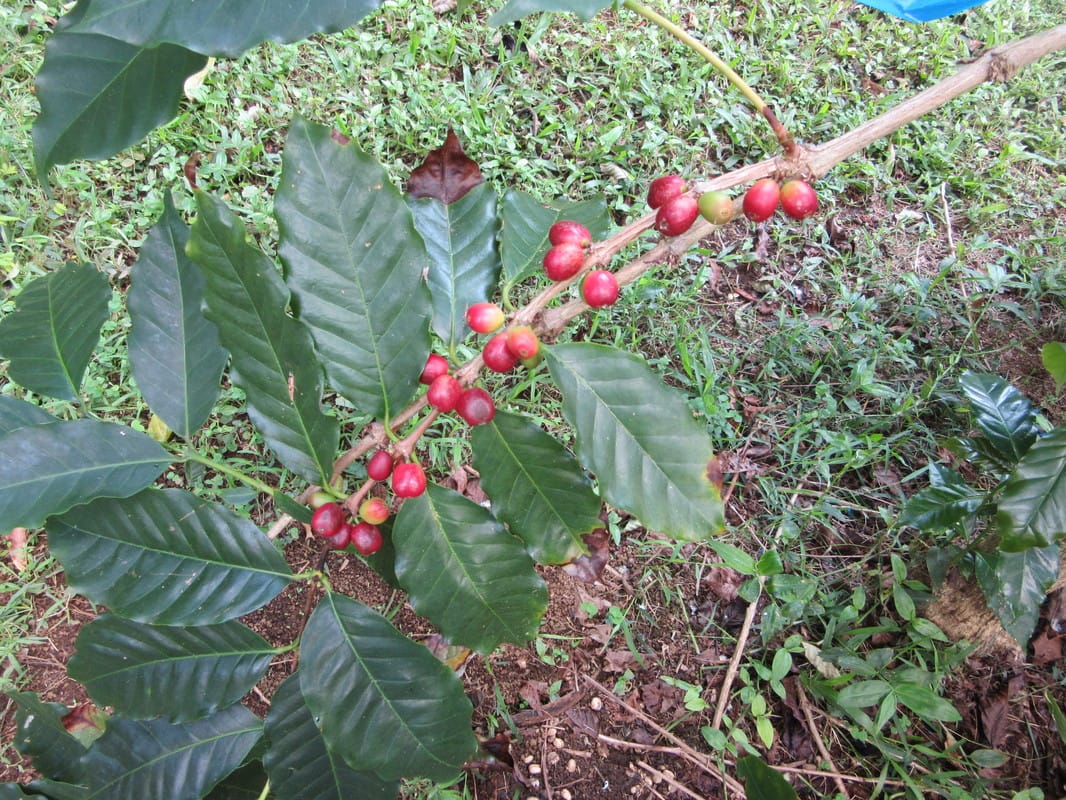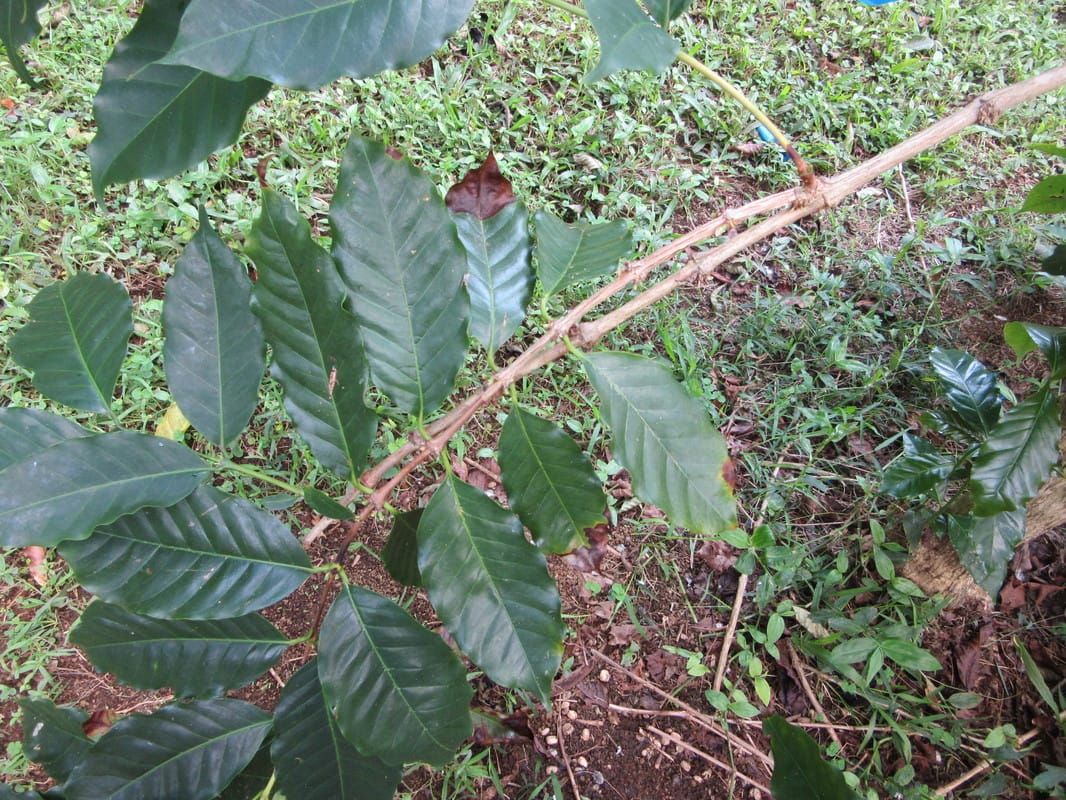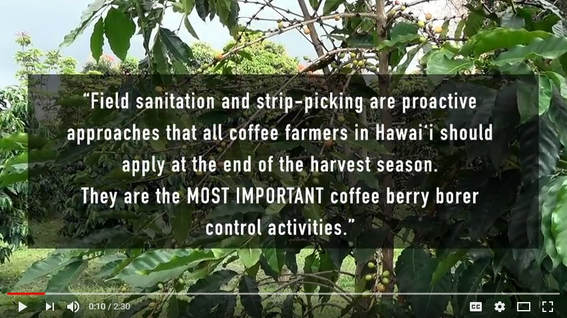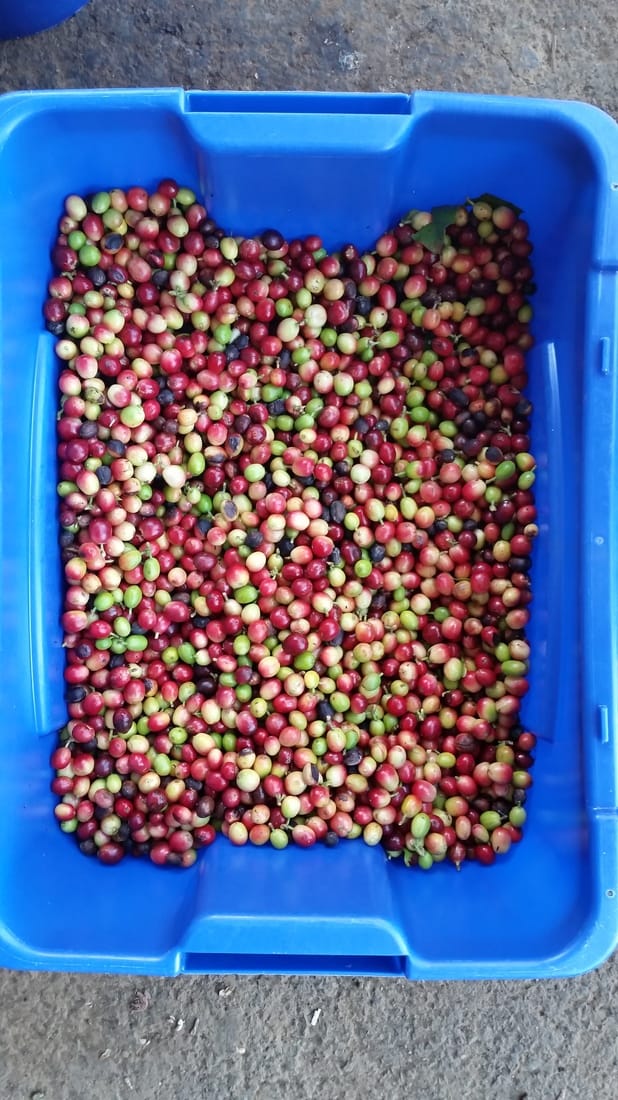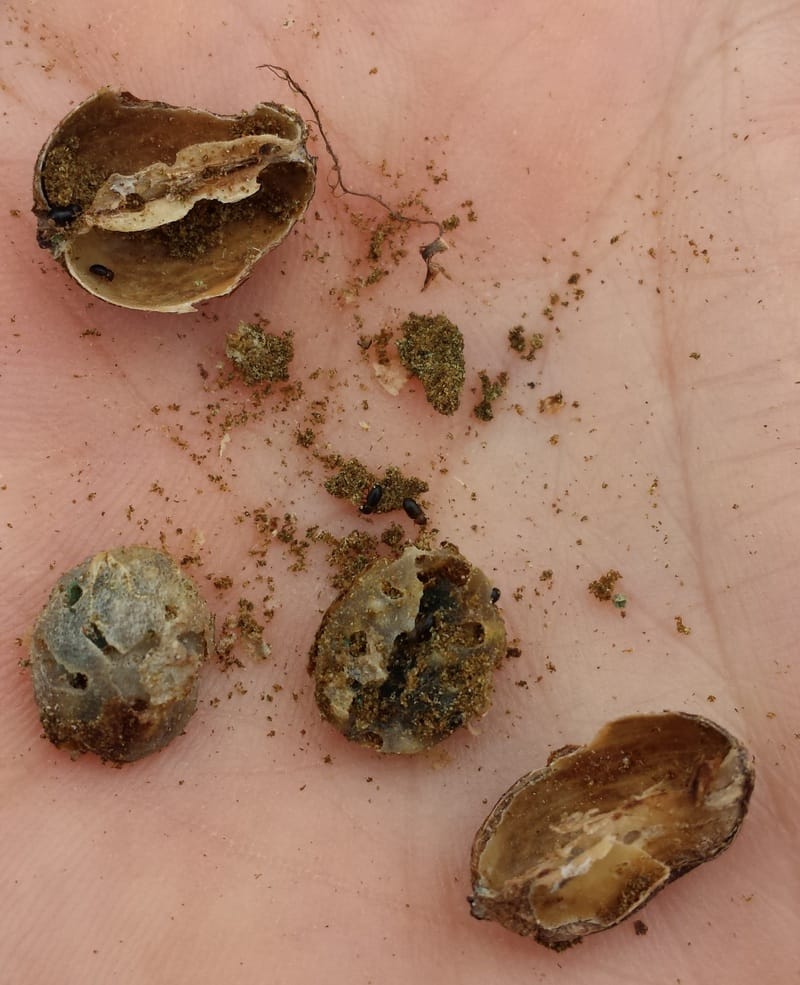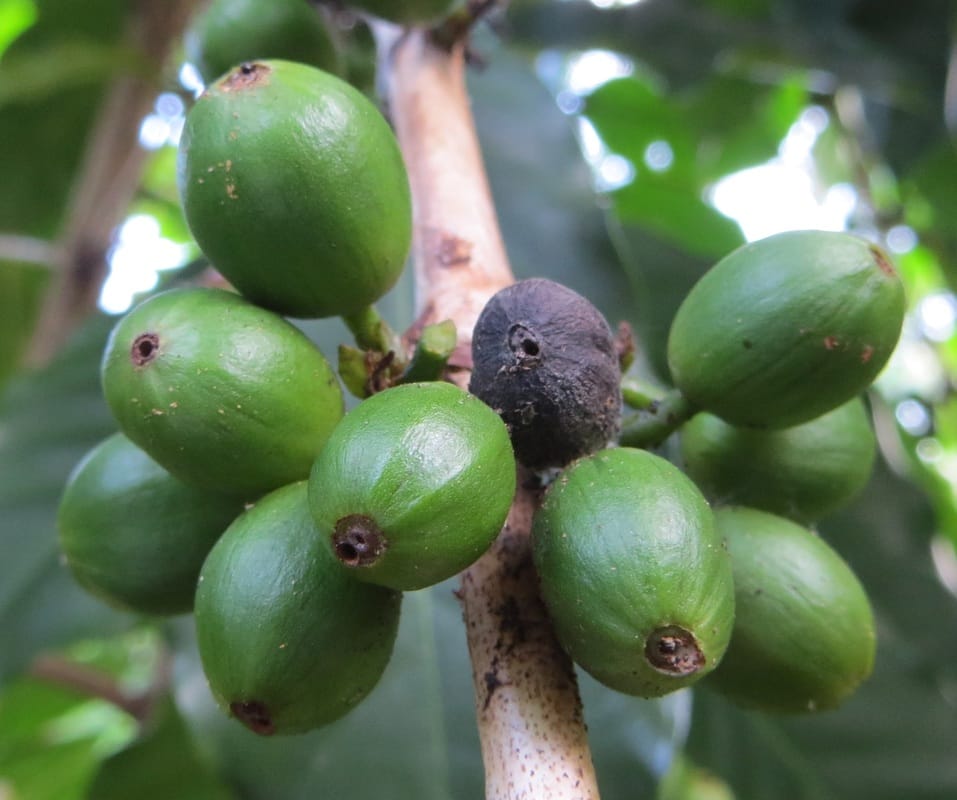Section I: Field Sanitation
|
A lateral with many all stages of berry development and where timely harvesting DID NOT occur. CBB have entered many of these raisins, ripe and over-ripe cherry. As a result, this branch was stripped of all berries, including greens and raisins, to reduce further CBB development and infestation of the following season's crop.
|
The information below, is an excerpt from the "Recommendations for Coffee Berry Borer Integrated Pest Management in Hawai‘i 2020" document. The complete article can be downloaded here.
CBB infestation is influenced by how effectively CBB were managed in the previous season. The most efficient CBB-management strategy is to begin the current season with the lowest infestation possible, then use IPM practices to maintain the low level. If CBB populations are allowed to build up to high levels in mid-season, it is extremely difficult and costly to reduce infestations even if all the practices are followed. CBB reproduce quickly, and once they have bored into the coffee bean, they are too well-protected to control. It is important to take advantage of the coffee crop cycle and CBB behavior to effectively manage them. The IPM strategy employs strip-picking at
|
the end of harvest, before pruning, and again at the beginning of the next season to remove CBB breeding sites. Other components of the CBB IPM strategy include timely spraying of pesticides, efficient harvesting, and stump pruning by blocks to create a protracted period when CBB have no food.
Field sanitation and strip-picking are related proactive approaches that all coffee farmers in Hawai‘i should apply during the fruit production period and at the end of the harvest season. They are the MOST IMPORTANT CBB-control activities.
Field sanitation and strip-picking are related proactive approaches that all coffee farmers in Hawai‘i should apply during the fruit production period and at the end of the harvest season. They are the MOST IMPORTANT CBB-control activities.
A. Coffee Cherry and Raisin
1. How and when do I strip-pick my coffee?
- Strip-pick all green, ripe, over-ripe, and raisin coffee at the end of harvest and prior to pruning.
- Avoid allowing coffee to fall to the ground or remain on trees or pruned branches.
- **Remaining cherry and raisin are potential breeding sites for CBB**
- View this short video for further instructions on how to conduct an end of season strip-pick.
- (Video) End of season strip-pick
- Process or destroy all coffee from this picking.
- If you have continuous, year-round harvesting, consider these options:
- Strip-pick after the peak harvest season, or
- Harvest every two to three weeks and remove all raisin, ripe and over-ripe cherry at each harvest.
- Strip-pick after the peak harvest season, or
- Additional pre-harvest-season strip-picks of berries that were missed or that grow between seasons is effective at further reducing CBB populations in the field. However, they cannot replace the end-of-season strip-pick. See Section IV: Harvesting.
2. How do I dispose of CBB-infested cherry?
- Completely enclose CBB-infested coffee in containers or bags to prevent re-infestation of your coffee farm:
- CBB can chew through many types of plastic bags.
- Use double heavy-duty, industrial-strength black trash bags.
- Buckets or drums with lids can be used and reused to contain and kill CBB. Do not reuse any container that previously contained pesticides, as this is a federal violation.
- If using burlap bags, place a trash bag inside and then tie tightly to prevent tearing of the trash bag and escape of CBB through the burlap weave.
- Leave bags and buckets in direct sunlight for at least 2 weeks.
- CBB can chew through many types of plastic bags.
- Bury infested cherry and raisin under at least 6 inches of compact soil, or
- Compost infested coffee with cherry skins:
- Cover the pile with a tarp and secure the edges.
- Freeze small amounts of infested coffee to at least 5˚F (-15˚C) for at least 48 hours to kill CBB [11].
- Once CBB are killed, return cherry to the field, use as compost, or remove from your farm and dispose of in an appropriate manner.
Strip-picking
|
BEFORE: Determining the best time to strip-pick your farm can be tricky. However, the longer berries are left on the tree after harvest, the greater the number of raisins and dropped coffee there will be. Also, the sooner your strip pick your farm, the sooner you can prune.
|
AFTER: Harvest and remove all berries, including those that are immature (green), overripes and raisins. Attempt to leave no berry behind. Be sure to look under leaves, between laterals and near the vertical trunk for hidden berries.
|
|
|
End of Season Strip-Picking Video
|
This photo shows a container of coffee berries and raisins from trees that were strip-picked at the end of the harvest season. It was decided by the manager that the strip-pick would be incorporated into the final round of harvest. Pickers removed all green, color-break, ripe, over-ripe and raisin coffee from the bearing laterals on each tree. Raisins were floated and removed and the remaining coffee was pulped.
Another option is to conduct two separate end-of-season harvests by picking all ripe to raisin cherry separately from the green berries. Following the harvest, floating cherry in water helps to remove hollow berries and raisins. |
Infested raisins will protect and harbor CBB for many months. Multiple generations of CBB can live in the beans of a raisin when left in the tree. All raisins and coffee that will become raisins by the next picking, should be removed from the trees during harvest and at the end of the harvest season to reduce the CBB population.
|
A strip pick may be required to remove early season mature coffee, particularly when these berries develop from a very small flowering that occurs ahead of the main flowering. If left, these early-season berries are the first to be infested by CBB. And, if Beauveria or strip picking is not employed to kill CBB, the beetles will exit from these berries and infest neighboring coffee from your main flowering.
|
Further reading:
[11] Hollingsworth, R.C., E.B. Jang, and P.A. Follett. 2013. Freezing as a treatment to prevent the spread of Hypothenemus hampei (Coleoptera: Curculionidae), in coffee. J. Econ. Entomol. 106(2): 653–660. http://doi.org/10.1603/EC12373
[11] Hollingsworth, R.C., E.B. Jang, and P.A. Follett. 2013. Freezing as a treatment to prevent the spread of Hypothenemus hampei (Coleoptera: Curculionidae), in coffee. J. Econ. Entomol. 106(2): 653–660. http://doi.org/10.1603/EC12373
Contact website management if you require any assistance with the site or information provided.

